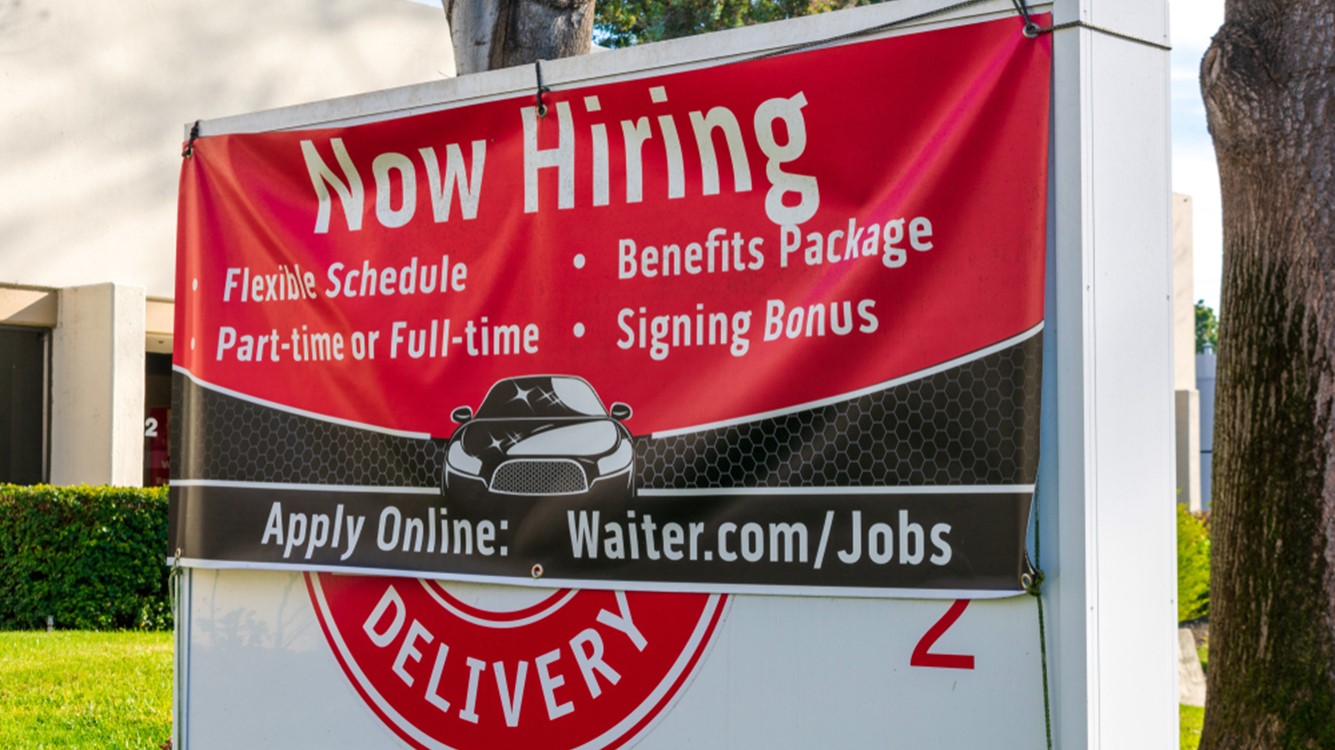November data showed slower labor demand
Hiring cooled in November, with 41 states reported lower hiring levels.

January 18, 2024
Job openings continued to cool in November, reaching 8.8 million, the lowest level since March 2021. The state data revealed that the cooling of labor demand we saw in the national data was broad-based by the end of November.
A total of 36 states and the District of Columbia experienced decreases or stagnation in job openings. What had been some of the hottest job markets are cooling the most rapidly. Mississippi, Florida, Georgia and Tennessee posted significant drops in job opening rates. Labor demand remained strong with increasing job openings in Texas and Colorado.
The ratio of job openings to job seekers remained nearly unchanged from October at 1.4. This stability was partly due to a decrease in the number of unemployed, which dropped by 181,000 from October to November. Although down from the peak ratio of 2.0 in December 2020, the current ratio of 1.4 still indicates a tight labor market compared to the pre-pandemic level of 1.2.
In total, 37 states and the District of Columbia recorded ratios at or above the national average. Notably, North Dakota and Maryland continued to post ratios above three, suggesting a particularly tight labor market. Conversely, California, with a ratio of 0.8, is the only state where the ratio fell below 1, indicating fewer jobs per unemployed individual. Given the recent job cuts in the technology sector, further declines in California's job openings for unemployed job seekers ratios are expected.
Hiring cooled in November, with 41 states reported lower hiring levels. That contributed to a nationwide decrease of 363,000. California alone accounted for 32% of that drop. Arizona and Oregon also saw significant decreases. With lower job opening ratios for unemployed job seekers than the national average, these states achieved a more balanced labor market in November.
Layoffs decreased by 116,000 nationwide in November. Notable reductions were seen in New Jersey and Pennsylvania, contrasting with increases in October. The conclusion of the United Auto Workers’ (UAW) strike in late October had a minimal impact on layoffs during and immediately after the strike in the Midwest. However, the newly negotiated contract by UAW did show its impact on wages. The average hourly wages in nonsupervisory manufacturing surged 5.8% from a year ago, driven by gains in durable goods manufacturing. That is the strongest annual result since April 2022, which was itself a 40-year high.
The total number of quits decreased by 157,000 in November, with North Carolina, Tennessee and Georgia contributing to nearly 60% of the decrease. While regional differences persist, most states have returned to their 2019 quits levels.
The decline in quits levels has continued to narrow the wage premium for job switchers. A separate report by ADP indicated that the median wage premium was less than 3% for those who switched jobs compared to those who stayed. Additionally, wages for new job postings are on a downward trend. The Federal Reserve views this deceleration in wage growth positively, as it contributes to cooling inflation and allows workers’ earnings to outpace price increases, contrasting with the dynamics in 2021 and 2022 when rising wages were offset by inflation.
We anticipate the Fed will opt for rate cuts in May rather than March.
George Rao, KPMG Economist
Bottom Line
Labor demand continued to slow in November. The combined effects of slower hiring, fewer quits and wage growth are leading to a more balanced labor market than a year ago. However, total job openings were still about 26% higher than in February 2020. With the Fed appearing to have concluded its rate hikes, the pace at which the labor market reaches pre-pandemic levels will be crucial in determining the timing of rate cuts. As the labor market is expected to cool gradually, we anticipate the Fed will opt for rate cuts in May rather than March.
Explore more

Lower labor demand as expected
The cooling of labor demand was widespread, especially in Sunbelt states.

KPMG Economics
A source for unbiased economic intelligence to help improve strategic decision-making.

How high for how long? Getting into the Fed’s head
The Federal Reserve is data dependent.
Meet our team

Subscribe to insights from KPMG Economics
KPMG Economics distributes a wide selection of insight and analysis to help businesses make informed decisions.
